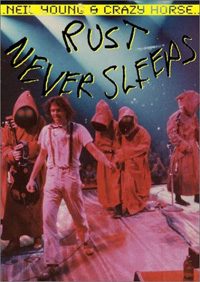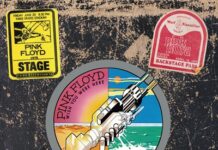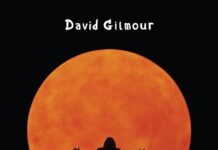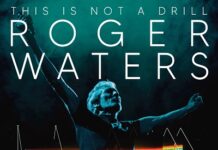Always one step ahead, Neil Young was one of the few musicians from the 60s
who wholeheartedly embraced the spirit of punk and new wave of the late 70s.
He had already begun dabbling in forms of recklessness on Zuma. By 1979, after
a series of country-oriented collaborations, Young was ready to recharge his
batteries with Crazy Horse in his corner. But a funny thing happened on the
way to the studio. Young crossed paths with Devo, the robotic and industrial
strength band leading the new wave brigade. It was from them that the Canadian
folkster heard the phrase, “rust never sleeps.” A light bulb flashed
on, and Young started to conceptualize an idea, something that would embody
the state of rock past and rock present — a farce on the extravagances and
absurdities of the entire game. It would become more than a song. Rust
Never Sleeps followed as a stage show, morphed into an album, and ultimately
became a film its maker called a “concert fantasy.”
Directed by Bernard Shakey aka Neil Young, Rust Never Sleeps
is a wonderful mess of a film that somehow lathers up its odd moments with surefire
charm, comical interludes and mouthwatering music. The live performances, filmed
on October 22, 1978 at the Cow Palace in San Francisco, are nothing short of
miraculous — whether it’s the stiff intimacy of Young and his acoustic
guitar, or his turns at bat with Crazy Horse. In the midst of the actual show
is all this other activity taking place. The “Road Eyes,” as they
are called, are members of Young’s regular road crew with a twist — they
operate with muted melodrama and “fervor and purpose” as they frantically
scramble the stage dressed like hooded wookies. During the film’s opening sequence,
the “Road Eyes” struggle to raise a giant microphone as a cacophony
of footsteps, Jimi Hendrix’s “Star Spangled Banner” and the Beatles’
“A Day In The Life” blares over the P.A. Once the stage is empty and
overflowing with enlarged road cases, Young appears, kneeling on top of a gigantic
amplifier and singing “Sugar Mountain.” After he runs through endearing
readings of “I Am Child,” “Comes A Time” and “After
The Goldrush,” Young intones with dry and adolescent abandon: “When
I get big I’m gonna get an electric guitar.” It only gets weirder from
there.
The newer songs are instant classics. “Hey Hey My My” (or “My
My Hey Hey”), in its acoustic as well as its electrified guise, covers
the range of rock from Elvis to Johnny Rotten, punctuated with the immortal
lines: “It’s better to burn out/Than to fade away…” Taking his cues
from the punks of the day, Young brings out Crazy Horse for the debilitating
“Welfare Mothers,” a tribute to passionate divorcees. Following a
Rust-O-Vision experiment gone wrong (it involved those flimsy 3D glasses
you could get at 7-11), the band kick into another scathing rocker called “Sedan
Delivery.” The sea parts once they settle into the unequivocal “Powderfinger,”
a broad sweep of the Wild West that finds Young’s darting guitar lines leaping
over the rhythm with eccentric agility and grace. Once the band blast through
“Cortez The Killer,” “Cinnamon Girl” and “Like A Hurricane”
(watching Frank “Poncho” Sampedro play a hanging keyboard resembling
a feathered apparitiont while the “Road Eyes” clear the stage of a
mysterious intruder is worth the price of admission), there’s no doubt that
Neil Young and Crazy Horse were (and remain) a crunching unit built to give
any punker a run for his money. The DVD is bolstered by a host of extras including
a photo gallery from the period and the original theatrical trailer. The sound
has also been remastered without much fuss, but offered in both DTS Surround
and Dolby Digital 5.1 Surround. Either way, Rust Never Sleeps
is a must-see for anyone who is willing to discover how utterly ridiculous the
whole rock and roll game can truly be.
~ Shawn Perry




















